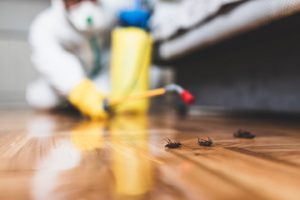Bears Valley Roofing Contractor has the knowledge, experience, and equipment to complete your roof repair or installation projects. They follow proper safety protocols and will install your roof according to manufacturer guidelines.

Schedule Consultations: A trustworthy contractor will visit your home for accurate measurements and tailored recommendations. Expect detailed estimates and contracts that clearly outline material choices, payment plans, and completion timelines. Ask about manufacturer and contractor workmanship warranties.
Whether you are dealing with storm damage or replacing your existing roof, a professional roofing contractor can help. They have years of experience and are familiar with the best practices in the industry, allowing them to provide expert recommendations on a range of roofing services. From materials to techniques, they can advise on the right solutions for your unique needs and budget.
They can also provide detailed written estimates and clearly explain any potential additional costs. Their transparency and professionalism are important for keeping the project on track, minimizing any delays or unexpected cost overruns.
It is also crucial to find out how much experience the contractor has in working with different types of roofs. They should have a portfolio of previous projects that showcase their work, detailing the scope of each job and the type of materials used. Ideally, they should also be able to provide customer testimonials that discuss their communication skills, problem-solving abilities, and ability to complete the work on time and within budget.
Another question to ask is what other roofing jobs the contractor has completed in your area. This can give you a good idea of their overall quality of work and whether they are familiar with the local building codes, regulations, and challenges that may arise in your community. Choosing a roofing contractor with experience in your area can also save you time and money, as they will be able to quickly access materials and services locally.
When hiring a roofing contractor, it is important to ensure they are adequately insured and licensed. Having both liability and workers’ compensation insurance will protect you in case of any accidents or injuries that may occur during the project. It is also a sign that they take their job seriously and value your safety.
Lastly, it is important to choose a roofing contractor with a good reputation in the community. Checking online reviews, Better Business Bureau ratings, and social media pages can give you a sense of their level of professionalism and quality of work.
Licensing
We’ve all heard horror stories of roofs half-done, crews disappearing overnight, and homeowners left holding the bag when a contractor fails to show up or doesn’t carry the proper insurance. And while these stories vary by state and market, the root causes are generally similar: a homeowner hired someone without checking licensing or insurance. That’s why it’s so important to know your state’s licensing requirements for roofing contractors—and to keep a close eye on renewal dates.
State-specific licenses typically require passing exams, documenting experience, and meeting minimum insurance or bonding thresholds. They may also include fees, background checks, and other requirements specific to the state or industry. For example, state-specific licensing system requires passing two separate exams and having at least four years of experience. Illinois’s minimum insurance requirements for licensure are higher—$500,000 per person and $2,000,000 total for all insured workers.
Other states, like North Carolina and South Carolina, require roofing contractors to pass a state-specific exam or meet minimum experience levels before qualifying for a license. These licensing standards are in addition to local licensing, bonding, and insurance requirements that differ by jurisdiction.
Most roofing licenses are valid for one or more years and may expire if not renewed on time. Some may also have renewal fees, insurance requirements, and continuing education (CE) requirements.
Some states, such as California and Florida, have statewide licensing systems with rigid exams and experience criteria that are difficult to navigate. Other states, such as Texas and Colorado, have more relaxed licensing standards that are easier to navigate.
Getting a roofing license shows clients that you’ve met high standards and have the credentials to do your work well. It can also help you get more competitive jobs in a crowded market by making it easier to win client trust and access higher-value projects. Plus, many clients may prefer to work with a licensed contractor to minimize risk and reduce their liability exposure. Check out our guide to find out more about licensing requirements across the country. Then use tools that track and alert you to renewal deadlines—like Invoice Fly Notifications and Receipt Scanner—to stay on top of your obligations.
Insurance
When hiring a roofing contractor, you need to be sure they have the right insurance coverage. If an accident or loss occurs while they are working on your home, this policy ensures you can pay for repairs without incurring a large financial loss.
In addition to general liability insurance, a roofing contractor should have workers’ compensation insurance. This is a legal requirement in New York City, and it covers medical expenses for employees who are injured on the job.
Roofing contractors can also be exposed to pollution-related claims. The products used to spray, seal or repair roofing systems can leave harmful fumes that are dangerous if inhaled. These fumes can also cause mold within a building. Most general liability policies exclude pollution-related losses, so a roofing contractor should have Contractors Pollution Liability (CPL) insurance to cover these claims.
Another important type of coverage that a roofing contractor needs is Inland Marine Insurance. This coverage protects tools, equipment and materials that are in transit or storage away from the job site. This is an especially important policy for roofing contractors who often move their equipment between jobs.
Additionally, any vehicles used by the roofing company should be covered by Commercial Auto Insurance. This policy can pay for damage or theft of the vehicle when it is being used for business purposes, and it is typically less expensive than a personal auto policy. Be sure to review the policy specifics carefully, as the insured may need to add endorsements for certain types of coverage.
Customer References and Reviews
Roofing references from previous customers can help you evaluate the contractor’s work quality and reliability. Ask about their project experience, satisfaction level, professionalism and budget adherence. This information can be invaluable in your selection process, ensuring that you select a roofer who will be able to meet and even exceed your expectations for the project. Customer testimonials and online reviews can also help you validate a contractor’s credibility, so don’t hesitate to verify their work history and reputation before making your final decision. This validation process will save you time and money by preventing poor workmanship. You’ll also avoid unforeseen costs by selecting a reputable roofer with a proven track record.
If you’re interested in learning more about our roofing services, contact us today to discuss your project. We’re happy to answer any questions and provide references from past clients!


